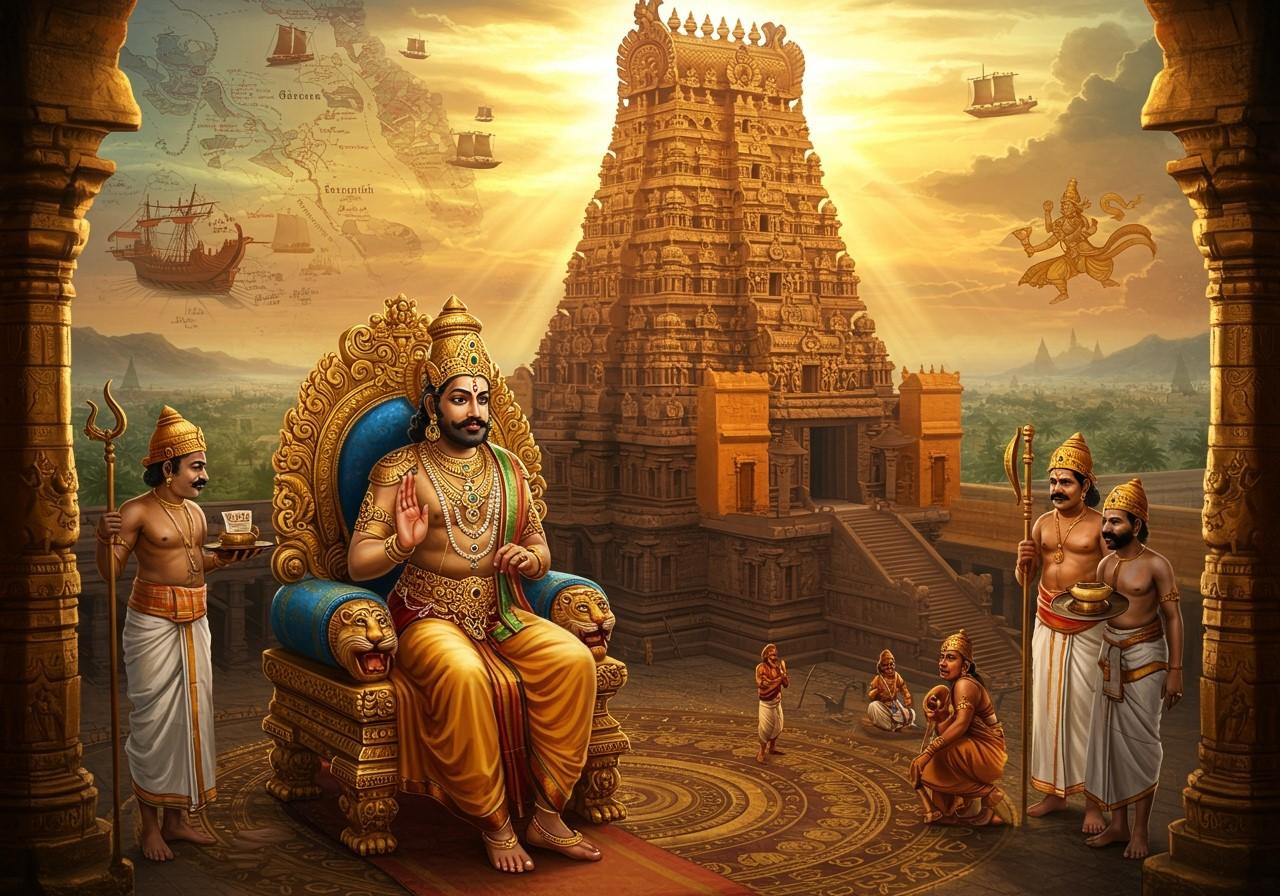
The Chola dynasty, a prominent South Indian power, reigned for centuries, reaching its zenith between the latter half of the 9th century and the 13th century. Under rulers like Rajaraja Chola I and Rajendra Chola I, the empire expanded significantly, influencing regions from South India to Southeast Asia. This era witnessed remarkable advancements in naval power, trade, administration, and cultural achievements, leaving an enduring legacy on the Indian subcontinent.
The Rise of the Cholas
From regional beginnings, the Cholas ascended to become a major force in South India. Initially, they navigated the political landscape alongside the Pallavas and Pandyas, utilizing strategic alliances and marriages to consolidate their power. Rajaraja Chola I played a pivotal role in unifying Tamil territories and extending the empire’s reach to Sri Lanka and the Maldives. His successor, Rajendra Chola I, further amplified this expansion, leading conquests into Southeast Asia, including the Srivijaya Empire.
The Chola Empire’s Golden Age
The Chola Empire’s influence extended far beyond the Indian subcontinent. At its peak, their territories encompassed South India, Sri Lanka, and parts of Southeast Asia. Their command of the Indian Ocean trade routes established them as a dominant maritime power.
Their naval prowess was a cornerstone of their success, facilitating expeditions that brought both wealth and cultural exchange. The administration was remarkably organized, incorporating local governance systems like nadu and vali units, which ensured efficient management across their vast territories. This structure allowed for centralized control while respecting local autonomy.
The Chola economy thrived due to fertile lands and control over key trade routes. This prosperity fueled their impressive cultural and religious achievements.
Cultural and Religious Contributions
The Cholas were renowned patrons of art and architecture, constructing magnificent temples like the Brihadeeswarar Temple, a testament to Dravidian architectural brilliance. These temples served not only as places of worship but also as centers of social and economic activity. Temple inscriptions offer valuable insights into the Chola administration and societal structure.
Tamil literature flourished under Chola rule, experiencing a vibrant renaissance. While the Cholas primarily supported Shaivism, they demonstrated tolerance towards other faiths, fostering a diverse religious environment.
Administration and Governance
The Chola administrative system skillfully balanced centralized authority with local autonomy. The king held ultimate power, supported by a well-structured bureaucracy. Inscriptions served as a crucial communication tool, disseminating information across the empire.
Innovative tax policies and land grants contributed to economic stability. A robust judicial system ensured effective conflict resolution. This sophisticated governance model enabled the Cholas to maintain their vast empire for centuries.
The Chola Legacy
The Cholas left an indelible mark on Indian culture and society. Their architectural styles and temple-building traditions continue to inspire. Their naval and trade practices influenced subsequent maritime powers in South India and Southeast Asia.
The Chola period significantly shaped modern Tamil identity and cultural heritage. Their rulers are revered as exemplary leaders and patrons of culture.
Poojn.in: Connecting to Chola Heritage
At Poojn.in, we offer a curated selection of authentic South Indian puja items and traditional artifacts that reflect the rich heritage of the Chola dynasty. Our collection includes:
- Bronze lamps (Vilakku): Inspired by Chola-era designs, these lamps illuminate both homes and sacred spaces.
- Traditional brass and copper vessels: Used for temple rituals, these vessels connect to ancient practices.
- Handcrafted metal idols: Created using time-honored techniques, these idols represent deities worshipped during the Chola period.
- Pure copper water containers (Chembu): Essential for traditional rituals, these containers carry cultural significance.
- Temple bells with classic Chola-style designs: Their resonant tones evoke the atmosphere of Chola temples.
These items help preserve the spiritual and cultural practices that flourished during the Chola era. Our products are sourced from skilled artisans who employ traditional crafting methods passed down through generations. Poojn.in delivers these authentic items across India. Each product includes detailed information about its ritual significance and usage.
Visit Poojn.in to explore our collection of traditional South Indian puja items. Our customer service team is available to assist you in selecting the right items for your spiritual needs. Product availability may vary; please check our website for current stock and pricing.
Celebrating the Chola Dynasty’s Enduring Influence
The Chola Empire’s golden age stands as a testament to remarkable achievements and enduring influence. Their legacy extends beyond territorial expansion to encompass culture, administration, and trade. Their magnificent temples symbolize architectural brilliance and spiritual devotion, while their literature continues to inspire.
The Chola administrative model, balancing central authority with local governance, remains a model of effective governance. Their pioneering spirit in maritime trade paved the way for future generations of seafarers and traders. The Cholas’ contributions illuminate our past and inspire our future, reminding us of the rich heritage that shapes our identity.
Dravidian Temple Architecture: A Detailed Guide
Dravidian and Nagara Architecture: A Comparison of Styles
Exploring Dravidian Architecture: South India’s Ancient Temples
Buy Brass Lakshmi Idols
Buy Brass Radha Krishna Idols
Buy Brass Ganesh Idols


